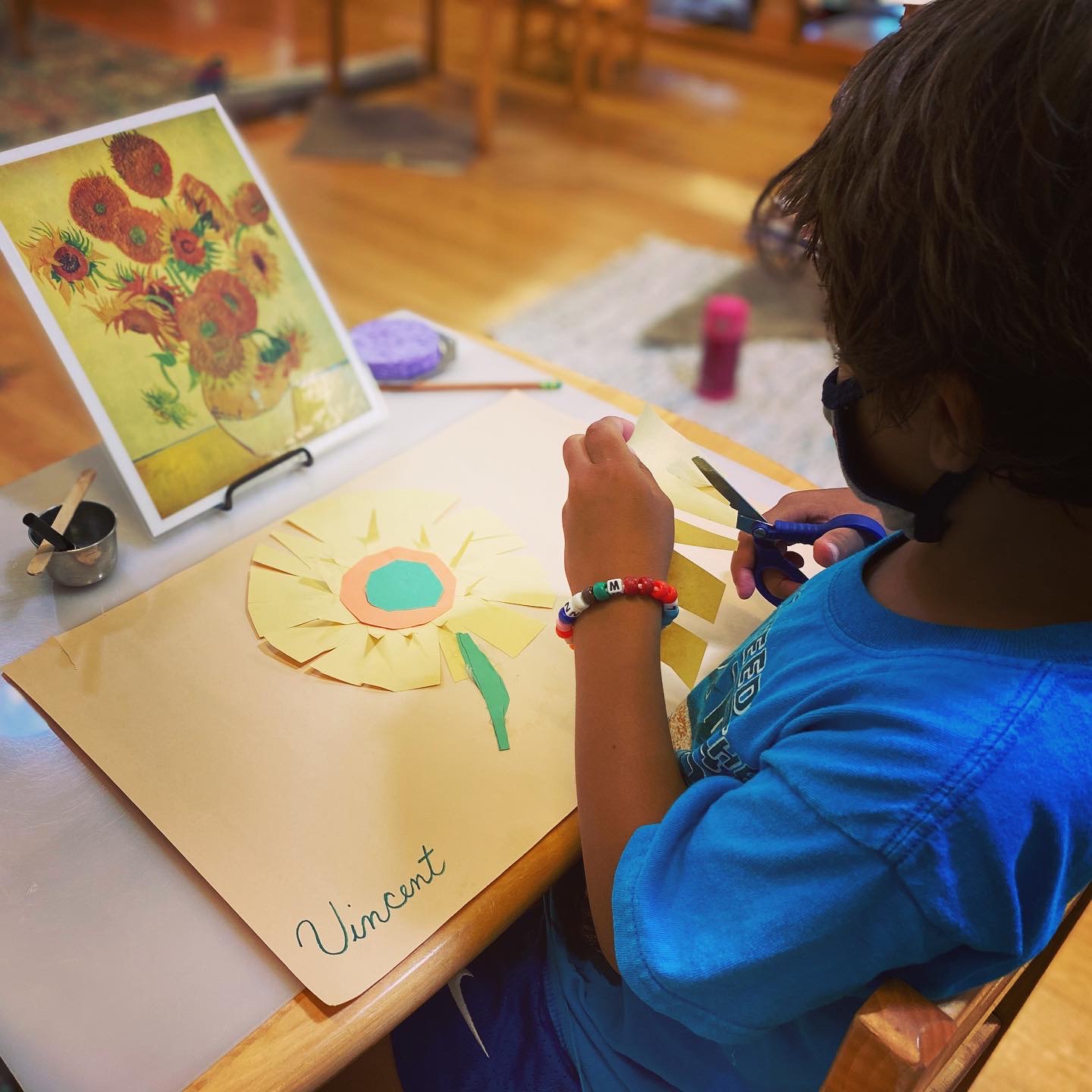Enabling Creativity Through Art
by Michele Aspinall
“If we try to think back to the dim and distant past…what is it that helps us reconstruct those times, and to picture the lives of those who lived in them? It is their art… It is thanks to the hand, the companion of the mind, that civilization has arisen.” Maria Montessori.
Art is a universal language. Artwork has the potential to stimulate and evoke a response from each of us regardless of our cultural background, whether we are creating it or simply admiring it. In the context of Montessori, the child of the First Plane is not taught art as a subject. As in all the areas of the classroom, we offer the “sensorial explorer” the materials for his own personal experience. We know that the purpose and aim of Montessori’s Sensorial work are for the child to acquire clear, conscious information and to be able to make classifications in his environment then, whether that be at school or home. Montessori believed that sensorial experiences began at birth. Through his senses, the child studies his environment. Through this study, he begins to understand it better.
We also know that through work with the Sensorial Materials, the child is given the keys to classifying things around him, which leads him to make his own experiences. Through this classification, he is also offered the first steps in organizing his intelligence, which steers him to adapt to his surroundings. With exposure to “The Arts”, a child will have different sensorial stimulations with various focus points. From these, he can learn the art of his own culture, compare it to the art of other cultures, and can be provided with the materials to create his own art.
Consequently, we want to provide experiences for our children to bring them into contact with each of the areas of art: line, shape, form, color, and texture. These elements can be found everywhere in our daily lives. Take time with your children to notice them.
Art is also a form of self-expression. In the classrooms, children can experience different media that can be used to communicate their ideas, thoughts, and feelings. When we speak of creating art, it is the process, not the product, that is essential to the child. He is working to develop himself. Once the activity itself is complete, many children feel no obligation or connection to the end product. It was only the process that provided him true gratification. It is our responsibility to respect this and not to impose our feelings onto the child. Constant praise or requests to “make something for ME” can create an unintentional assembly line. The child is suddenly manufacturing art to elicit approval instead of satisfying an inner need to create for the sake of expression. When admiring art, whether it is a Van Gogh or your child’s masterpiece, resist the impulse to share your opinions. Instead, ask questions and make observations and keep it open-ended. This tells the child that you are looking thoughtfully and are interested in their ideas. You are essentially helping him to develop his feelings of competence and confidence. Who knew that art could help our children develop such fundamental characteristics? Oh yes, Dr. Montessori did!
Calls us to schedule your personalized virtual tour or in person tour!
847-498-1105



Leave a Comment